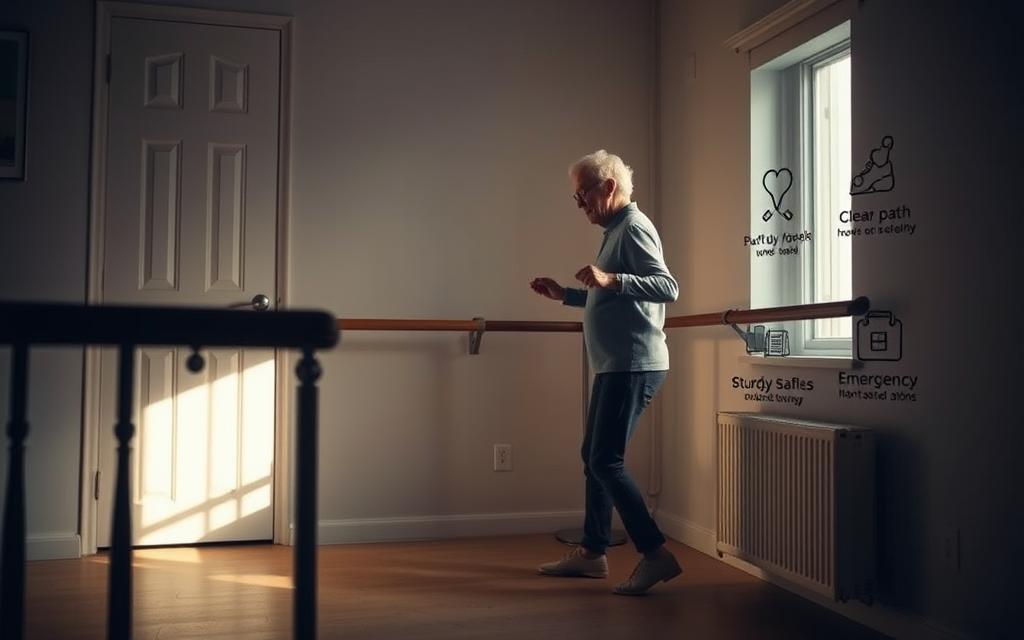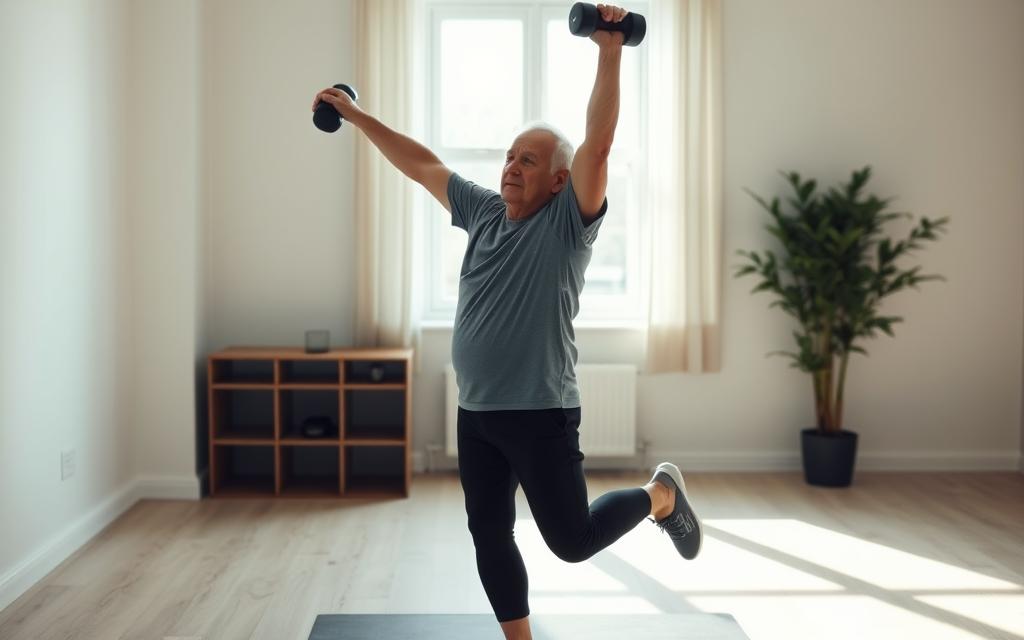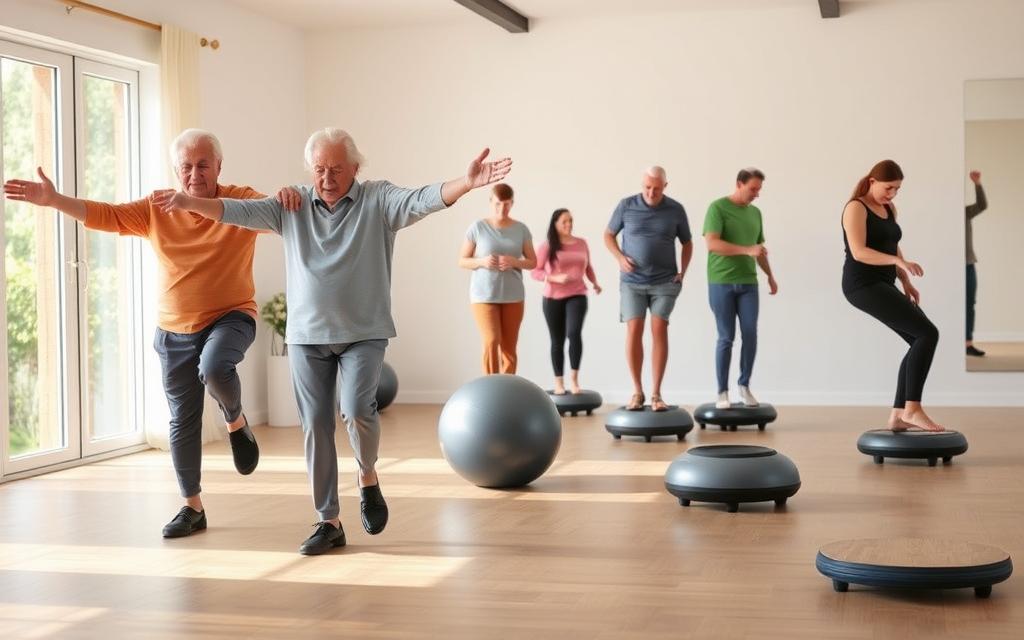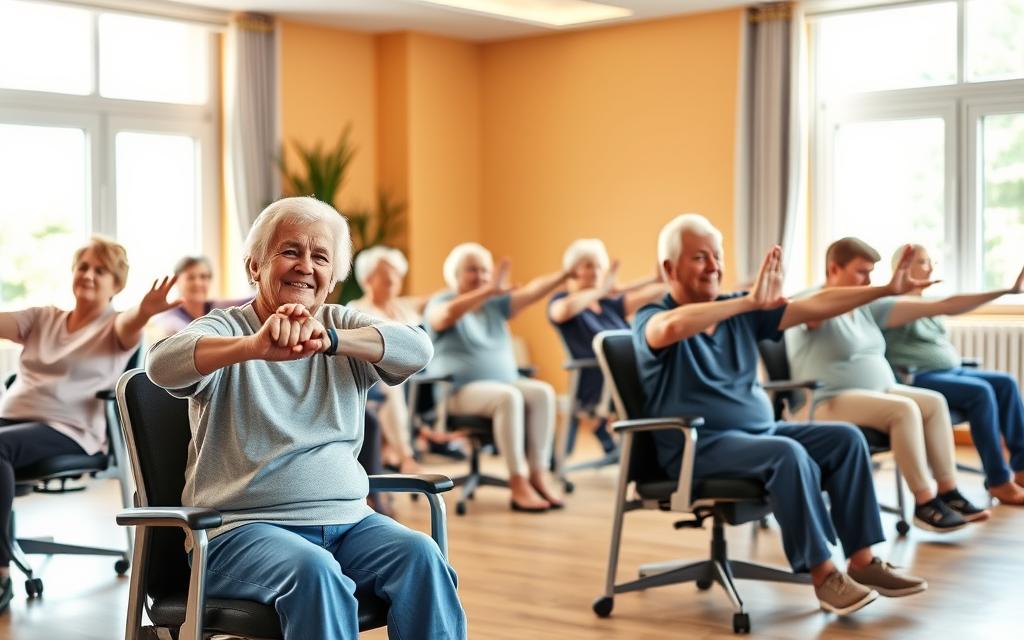Top 10 Best Balance Exercises for Seniors in 2025
Do you worry about losing your balance as you get older? The Top 10 Balance Exercises for Seniors at Home can help. They keep you steady while you do daily tasks and spend time with loved ones. These exercises also make your core stronger, improve your posture, and lower fall risks.
You should feel strong and steady in every step. Simple actions, like slowly lifting one leg, make you more stable. They also help your joints. Doing these exercises every day can make you feel more confident and free.
Remember to drink water, wear comfy clothes, and have a chair or wall nearby for support. This will help you exercise safely.
Key Takeaways
- Regular balance exercises lower your risk of falling.
- Gentle routines can strengthen muscles and boost mobility.
- Staying hydrated and wearing supportive shoes matter.
- Small changes, like lifting one leg, can lead to big gains.
- Feeling steady brings more confidence to everyday life.
- Consistent practice promotes better posture and core strength.
Understanding the Benefits of Balance Exercises for Older Adults
Balance exercises help you stay steady every day. They make your core stronger and improve your posture. This keeps you from slipping or stumbling.
Doing these exercises often can really help. It lowers the risk of falling. You can do them every day or a few times a week.
Falls are a big problem for older adults in the U.S. The Centers for Disease Control and Prevention says this to stress the importance of balance exercises. Even small steps help improve your balance and safety.
A strong mind-body connection is important for balance. Paying attention to each step helps you react quickly and stay steady. This builds your confidence and keeps you healthy, showing that balance can get better with age.
Top 10 Balance Exercises for Seniors at Home
Slow, steady movements help you feel more confident. They make your posture better, calm your mind, and lower fall risks. Paying attention to your feet and arms is key.
Heel-to-Toe Walk for Coordination
Walk as if on a thin path. Place your heel right in front of the other foot’s toes. This improves your core and balance. Try it in a hallway, looking straight ahead and keeping your arms loose.
Stand on One Foot for Stronger Stability
Hold onto something for support. Lift one foot and hold for ten seconds. Then, switch and do the same with the other foot. Repeat until you feel more balanced.
Tai Chi for Gentle Control
Tai Chi is all about slow, flowing moves and deep breathing. It helps you balance better over time. It also relaxes your shoulders and brings calm to your mind.
Essential Safety Tips to Help Improve Your Balance and Prevent Falls
Staying upright starts with careful planning. Always talk to a trusted doctor before trying new things. This chat helps make sure you’re ready for each activity.

Talk to Your Doctor About Exercises Safely
Your doctor knows your health history. It’s important to talk about any worries. Make sure to wear shoes that grip well on smooth floors.
Using a Chair or Wall for Support
Stand near a sturdy chair or wall. This way, a small stumble won’t turn into a big slip. Practice each move for about ten seconds to build confidence.
If a move feels too hard, change it. Try lifting your foot just an inch instead of high. Many people like standing near the back of a chair for extra stability. Keeping good posture and taking careful steps helps you enjoy exercises without strain. Staying safe helps you strengthen your balance and prevent falls.
Exercises for Older Adults to Improve Strength and Balance
Want to stay steady on your feet? Try simple moves to keep your muscles strong. Sideways walking is a good start. It helps you balance better and strengthens your core.

Grapevine steps are another fun challenge. You step one foot in front of the other, crossing at the midline. This boosts your lower-body strength and can help your posture.
These small steps help you get ready for harder moves later. Keep a steady pace and hold onto something if you feel wobbly. Regular practice makes your legs stronger and supports your joints and core. It builds your confidence to try new things.
How Strength Training Enhances Balance and Stabilizes Your Body
Adding gentle strength exercises to your routine helps with stability. It builds muscle around key joints. This improves your posture and balance in daily life.

Incorporating Light Weights Into Your Routine
Start by carrying small items like soup cans in each hand. This strengthens your arms gently. Try lifting your right foot while holding a weight in your left hand.
This small action boosts your coordination. Make sure to keep good posture. If you feel ready, add a bit more weight.
Focusing on Leg Strength for Better Balance
Leg exercises help keep you steady. They strengthen muscles around your knees and ankles. Squats, seated leg raises, or calf raises are good starts.
Hold onto something stable to avoid wobbling. This lets you move at your own pace. Doing this a few times a week can really help your balance.
| Recommended Weight | Brand Example | Suggested Progress |
|---|---|---|
| 1-2 lbs | Bowflex Hand Weights | Start slow with consistent reps |
| 2-5 lbs | Gold’s Gym Dumbbells | Graduate to moderate increases |
| 5-8 lbs | TheraBand Resistive Bars | Challenge yourself with caution |
Physical Therapist Insights on Effective Exercise for Balance
Many older adults feel more confident with a physical therapist’s help. This expert creates a workout plan just for you. It focuses on keeping your posture right, using your core, and adding new challenges.
Preventing Falls with Professional Guidance
Standing on one leg helps improve balance. Slowly moving your weight is also important. A trained expert watches you closely, helping you get better.
They pay extra attention to your core and legs. Stronger hips make walking up stairs easier. You get stronger without hurting your joints. This personal help makes you feel more stable every day.
Using Simple Balance Exercises to Lower the Risk of Falling
Simple balance exercises can make you more stable. Standing on one foot, with a hand on a chair, builds core strength. This helps your body stay upright, even if you wobble at first.
Start by lifting your foot off the floor carefully. Keep a hand on the chair until you feel steady. Taking small steps helps you avoid falls and keeps you independent.
Challenging yourself a little bit each time makes you more confident. As your balance gets better, so does your trust in moving. This gentle approach helps you stay safe and active.
Work on Your Balance with a Progressive Exercise Program
Start slow to build a strong core and keep your body straight. A plan that changes with you helps you get better. You’ll feel more confident and move quicker with each step.
Keep your posture right. This helps your ankles, hips, and core work together smoothly.
Challenge Your Coordination
Try lunging with the opposite leg each step. This makes your muscles work harder to stay stable. You’ll get better at moving in different ways.
Balance Skills on Both Sides of the Body
Do exercises that make your left and right sides strong. This helps you stay steady and balanced. Practice every day to be ready for surprises.
Here’s a simple chart to help you progress:
| Level | Exercise | Primary Benefit |
|---|---|---|
| Beginner | Chair-assisted Squat | Increases lower-body strength |
| Intermediate | Lunge Step Sequence | Enhances coordination |
| Advanced | Alternating Side Steps | Improves lateral agility |
Conclusion
Working on these top 10 balance exercises for seniors at home can really help. It makes you stronger and more coordinated. Start small, like holding onto a chair, and you’ll get better over time.
Always talk to your doctor if you feel any pain or discomfort. This keeps you safe and prevents falls. Move at your own pace. If you feel too shaky or in pain, stop right away.
Imagine doing Tai Chi with ease, knowing your feet will find the ground. This vision can motivate you. Being consistent is important for older adults. Every step you take towards balance brings a brighter future.
Related Information: Best Low-Impact Exercises for Seniors Over 60 & Older Adults


